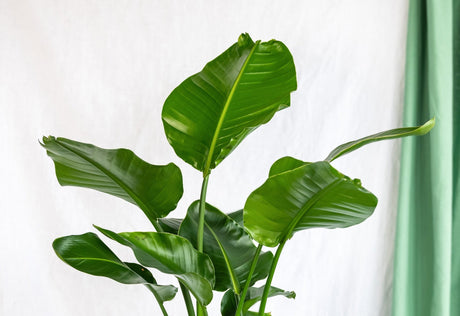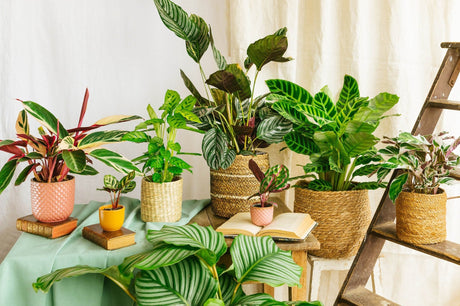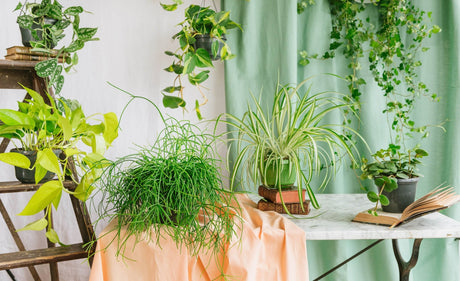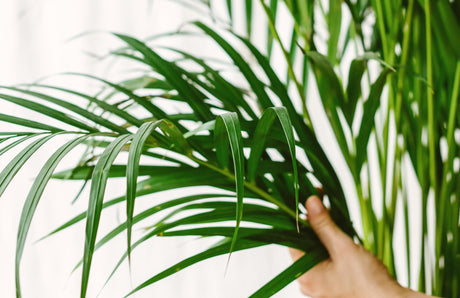The Aloe Tiki is a succulent with leaves fleshy and thick, with of edges serrated. Its color varies from bright green to bluish green, adding a touch of freshness to any indoor environment. The leaves enclose a clear gel renowned for its soothing and hydrating properties.
1. Watering an Aloe Tiki
Aloe Tiki is a succulent plant, which means it stores water in its leaves fleshy. This adaptation allows it to survive in conditions arid. Therefore, avoid too much watering, as excess water can lead to problems such than the rot of the roots.Reduce the frequency of watering during the autumn and winter months, when the plant enters a phase of rest. During this period, water only when the soil is completely dry. Reduced light solar and temperatures cooler contribute to slow down the need in water of the plant.
Tip: Insert your finger into the ground to a depth of approximately 2-3cm . If the soil is dry at this depth, it is usually time to water it.
2. Watering techniques
Watering at the base
Opt for watering at the base of the plant. Use a watering can with a thin spout to deliver the water directly to the ground, near the stem of the Aloe Tiki. This helps prevent over-wetting the leaves, which could lead to rot or disease problems.Dipping Watering Can
From time to time, you can opt for the soaking method. Place the Aloe Tiki pot in a shallow tray of water and wait until the substrate is moist. Then remove the pot and let the excess water drain out. Make sure the pot has drainage holes to prevent water stagnation.3. The display of an Aloe Tiki
Aloe Tiki thrives under indirect bright light. Place it near a window facing east, west or south, where it will receive a amount moderate of light sun. Indirect light is preferable because it avoids direct and intense rays which could burn the leaves.Although Aloe Tiki likes light, avoid exposing it to light direct and intense from the sun for long periods of time, especially during the hottest hours of the day. The fleshy leaves of the Aloe Tiki can dry out or burn if exposed to excessive sunlight.
4. When should I repot my Aloe Tiki?
The ideal way to repot your Aloe Tiki is at the early spring season, when the plant enters its period of growth active. At that point, it will be better equipped to adapt to its new pot and new substrate.Here are some signs to watch out for:Excessive rooting
If the roots are starting to protrude from the current pot or are twisted and tangled, it's time to repot.Soil degradation
If the substrate is depleted, compacted, or no longer drains properly, repotting is necessary to provide new nutrients and adequate drainage.Slowed growth
If plant growth slows down, the roots may run out of room to grow, which can limit plant growth.Yellowing or wilting of leaves
If the leaves turn limp, yellow, or begin to wilt despite adequate watering, it may indicate root problems, requiring repotting.5. What fertilizer should I use for my Aloe Tiki?
For your Aloe Tiki, you can use a fertilizer specially formulated for succulents or cacti.Application frequency
Fertilize your Aloe Tiki about once every six to eight weeks during its active growth period, which is usually in the spring and summer. Reduce or discontinue fertilizer application during the fall and winter when the plant goes dormant.Dosage and dilution
Carefully follow the instructions provided on the fertilizer package for dosage and dilution. Over-fertilizing can be detrimental to the health of the plant, so it is better to under-fertilize slightly than to over-fertilize.Watering before fertilizing
Lightly water your Aloe Tiki before applying fertilizer. Fertilizer should be applied to moist soil to avoid root stress.6. How do I multiply my Aloe Tiki?
You can multiply your Aloe Tiki using the dividing suckers method:The division of rejects
This involves taking the small shoots growing near the main plant, carefully separating them, letting them dry out for a day, and then planting them in new
7. Diseases of an Aloe Tiki
Aloe Tiki is generally a hardy and resistant plant, but it can be prone to some problems of health, mainly linked to inappropriate culture conditions. Here are some common diseases and problems that the Aloe Tiki can face:
Root rot
Overwatering or poor soil drainage can lead to root rot. The leaves may become soft, yellowish and eventually fall off the plant. To avoid this, be sure to use a well-drained substrate and water moderately.Leaf rot
Excessive moisture, especially on the leaves, can promote the development of mold or fungal diseases. Avoid spraying the leaves and make sure the plant is well ventilated.Leaf spots
Brown or black spots on the leaves can be caused by excess moisture, splashes of cold water or mechanical injury. Avoid wetting the leaves while watering and handle the plant with care.Soft leaves
Overwatering can result in limp, wilting leaves. Let the soil dry out between waterings and make sure the pot has good drainage.Insect infestations
Aphids, scale insects and mites can infest the Aloe Tiki. Regularly inspect your plant for any signs of infestation. Use natural methods or mild insecticidal products if necessary.Discoloration of leaves
Excessive exposure to direct sunlight can cause scorching of the leaves, causing them to appear discolored or reddish. Place the plant in indirect light to avoid this.Slowed growth
Lack of light, insufficient fertilization or poor drainage can lead to slow growth. Make sure your plant gets enough indirect light and follow a proper fertilization schedule.8. Delivery and receipt of your plant
- Your plant is dry
- Is your plant wet ? Let the potting soil dry.
- Should I repot my plant right away ? No ! Wait until next spring or for signs that your plant needs repotting.






